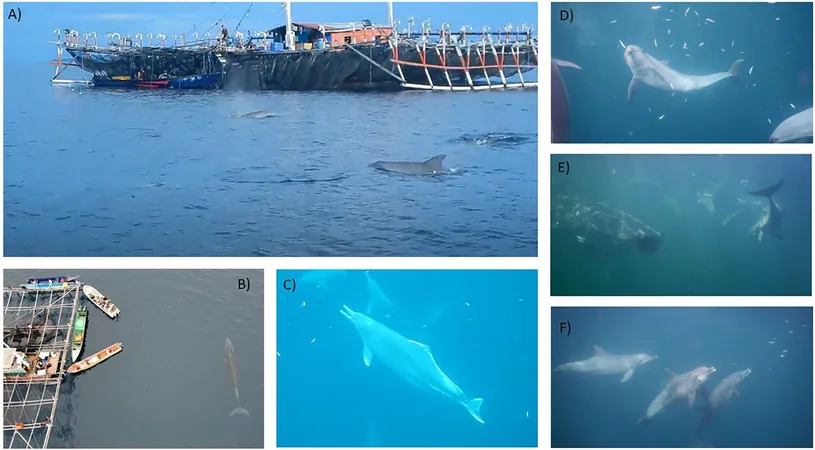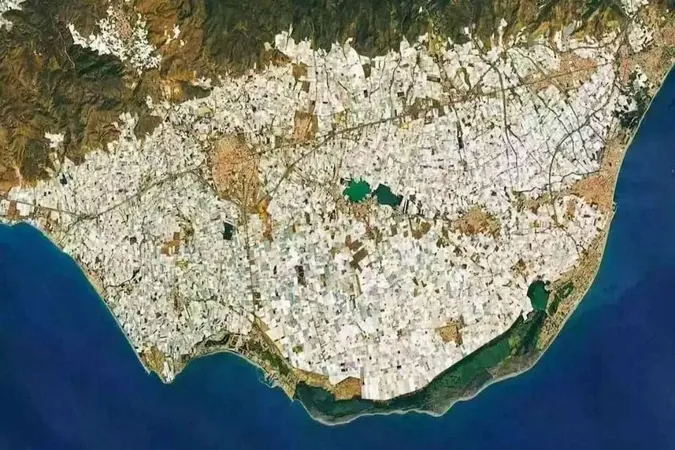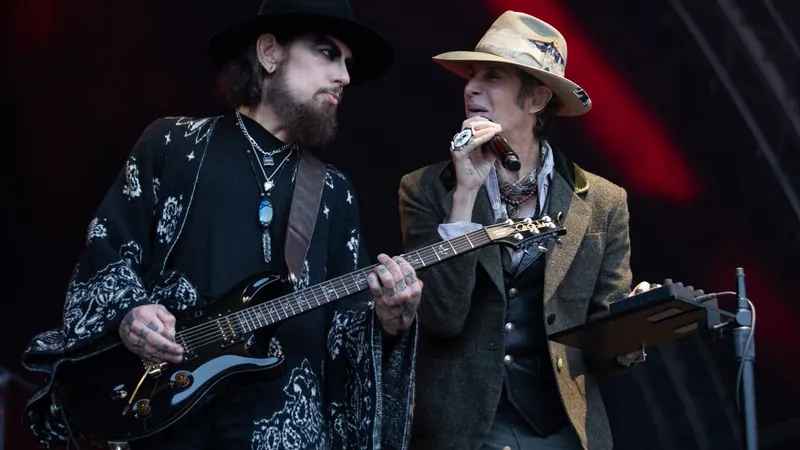
Uncovering the Impact of Lift-Net Fisheries on Cetaceans in Kaimana, Indonesia: A Call for Conservation Action
2025-01-20
Author: Olivia
Cetaceans—an essential group of marine mammals that include dolphins, porpoises, and whales—play a vital role in the health of coastal ecosystems. These remarkable creatures are not only pivotal for carbon sequestration and nutrient cycling, but they also help control prey species populations and act as bioindicators for the prevailing health of our oceans.
Kaimana: A Crucial Habitat for Cetaceans
Kaimana, located in West Papua, Indonesia, serves as a habitat for over 30 cetacean species. Notably, Bryde's whales (Balaenoptera edeni), Australian humpback dolphins (Sousa sahulensis), and Pacific bottlenose dolphins (Tursiops aduncus) are perennial visitors to these waters. The International Marine Mammal Protected Areas Task Force designated Kaimana as an Important Marine Mammal Area (IMMA) during a 2018 workshop, acknowledging its significance for cetacean populations. However, detailed research on these marine mammals in Kaimana has been lacking until recently.
A Collaborative Research Effort
A collaborative effort involving independent researchers and conservationists from Indonesia and New Zealand has shed light on this critical ecological region. Conducted over a two-year period from May 2021 to March 2023, extensive surveys across Kaimana resulted in the identification of five cetacean species, providing valuable insights into their population sizes and feeding behaviors. The findings were recently published in Frontiers in Marine Science.
The Importance of IMMAs for Conservation
The Marine Mammal Protected Areas Task Force, in partnership with organizations such as the IUCN World Commission on Protected Areas and the Global Ocean Biodiversity Initiative, establishes criteria for identifying Important Marine Mammal Areas (IMMAs). These criteria assess various aspects, including the vulnerability of species, their distribution, and vital life cycle activities like feeding, migration, and reproduction.
The recent study highlighted that Kaimana's IMMA is crucial not just for Australian humpback dolphins, which are categorized as 'Vulnerable', but also for other cetacean species such as 'Near Threatened' Indo-Pacific bottlenose dolphins and 'Least Concern' Bryde's whales. Interestingly, the area also serves as habitat for 'Vulnerable' dugongs (Dugong dugon), although their use of the region is still under investigation.
Historically, the most recent significant survey before this study took place in 2015, documenting 64 pods of Australian humpback dolphins and 40 pods of Indo-Pacific bottlenose dolphins.
Lift-Net Fisheries: The Double-Edged Sword
This recent research also explored the interactions between cetaceans and lift-net fisheries, operators that use coastal methods to catch bait fish like anchovies and shrimp. Observations were conducted over 111 days and detailed the sightings of five cetacean species, including their IUCN conservation statuses:
- Bryde's whale (Balaenoptera edeni, Least Concern, 48 individuals) - Killer whale (Orcinus orca, Data Deficient, 1 individual) - Australian humpback dolphin (Sousa sahulensis, Vulnerable, 441 individuals) - Spinner dolphin (Stenella longirostris, Least Concern, 478 individuals) - Indo-Pacific bottlenose dolphin (Tursiops aduncus, Near Threatened, 2,612 individuals)









 Brasil (PT)
Brasil (PT)
 Canada (EN)
Canada (EN)
 Chile (ES)
Chile (ES)
 Česko (CS)
Česko (CS)
 대한민국 (KO)
대한민국 (KO)
 España (ES)
España (ES)
 France (FR)
France (FR)
 Hong Kong (EN)
Hong Kong (EN)
 Italia (IT)
Italia (IT)
 日本 (JA)
日本 (JA)
 Magyarország (HU)
Magyarország (HU)
 Norge (NO)
Norge (NO)
 Polska (PL)
Polska (PL)
 Schweiz (DE)
Schweiz (DE)
 Singapore (EN)
Singapore (EN)
 Sverige (SV)
Sverige (SV)
 Suomi (FI)
Suomi (FI)
 Türkiye (TR)
Türkiye (TR)
 الإمارات العربية المتحدة (AR)
الإمارات العربية المتحدة (AR)